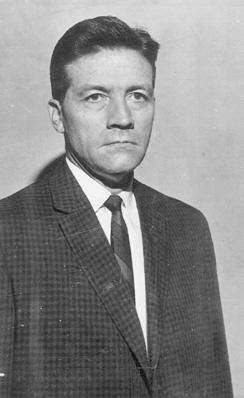The U.S. Air Force Colonel John Boyd aka Forty Second Boyd could win any aerial battle in less than forty seconds. He devised a mental model called the OODA loop on how to make rational decisions under pressure where he demonstrated time and again how agility can overcome raw power.
The OODA Loop (Observe, Orient, Decide, Act)
One of the most important skills that’s key in any role is to be nimble and adapt quickly.
Let’s suppose you’re preparing to give a 30-min presentation at a conference. You train/work hard on it and get ready to act/perform.
On the day of the conference, if you were thrown a curve ball (e.g., you were only given 10 instead of 30 mins or you were being constantly interrupted by the audience).
You’re now forced to reexamine/reassess your decision based on your observation and your orientation of what just transpired.
The quicker you can adapt and not get affected by the change, the more effective you would be.
1. OBSERVATION
See the situation as it exists.
Build the most accurate possible observation of the as-is situation. Synthesize/Analyze the “galaxy of forces”.
Mastering the art of observing your environment is key to making good decisions.
An important skill is to identify signal vs. noise - which information is noise and irrelevant for the current decision.
2. ORIENTATION
Don’t jumpt to a decision right after you observe. Orientation is a key step before you decide. Connect yourself with reality and see the world as it really is.
Orientation is not just a state you’re in - it’s a process. You’re always orienting.
Boyd refers to orientation as the schwepunkt, meaning “the main emphasis.”
Orient yourself to recognize any barriers that interferes with the other parts of the OODA loop.
Properly orienting yourself can be enough to overcome an initial disadvantage, such as fewer resources or less information, to outsmart an opponent.
Boyd identified the following four main barriers that impede our view of objective information:
Our cultural traditions – we don’t realize how much of what we consider universal behavior is actually culturally prescribed
Our genetic heritage – we all have certain constraints
Our ability to analyze and synthesize – if we haven’t practiced and developed our thinking skills, we tend to fall back on old habits
The influx of new information – it is hard to make sense of observations when the situation keeps changing
To orient himself, Boyd’s approach was a scheme of pulling things apart (analysis) and putting them back together (synthesis) in new combinations to find how apparently unrelated ideas and actions can be related to one another.
3. DECISION
The previous two steps provide the background you need to make an informed decision.
If there are multiple options at hand, you need to use your observation and orientation to select one. Remember - it’s an OODA “loop”.
There needs to be “a self-correcting process of observations, analysis/synthesis, hypothesis, and test".”
4. ACTION
Test your decision out. The results will (hopefully) indicate whether it was a good one or not, providing informatio for when you cycle back to the first part of the OODA loop and begin observing anew.
“…To be somebody or to do something. In life there is often a roll call. That’s when you will have to make a decision. To be or to do? Which way will you go?” - John Boyd
Until Next Time,
Keshav :)







